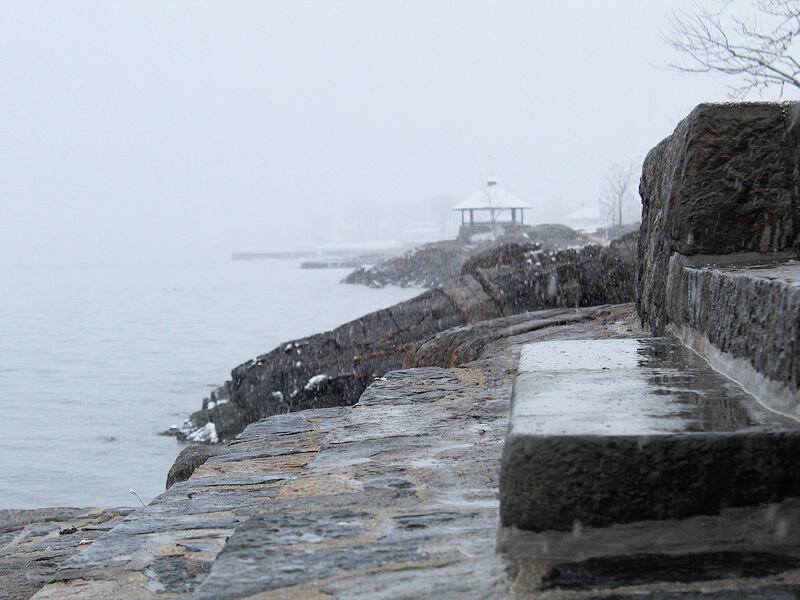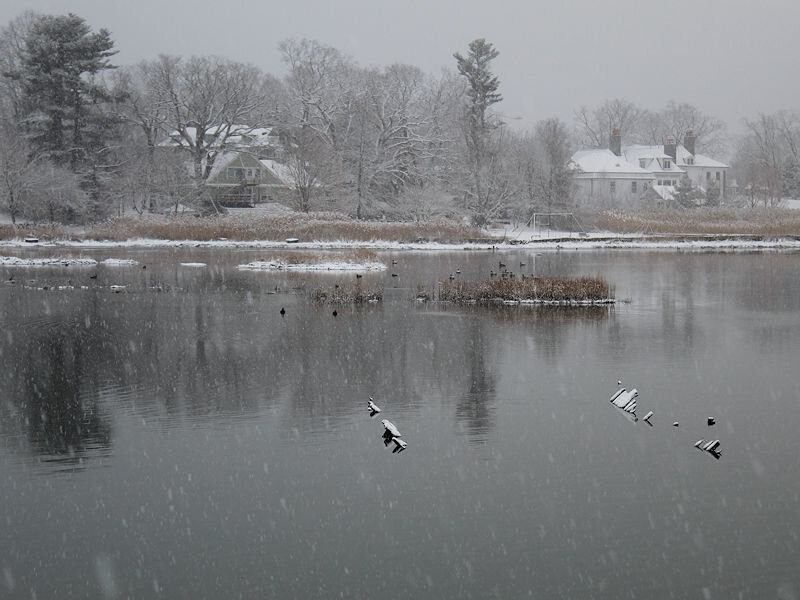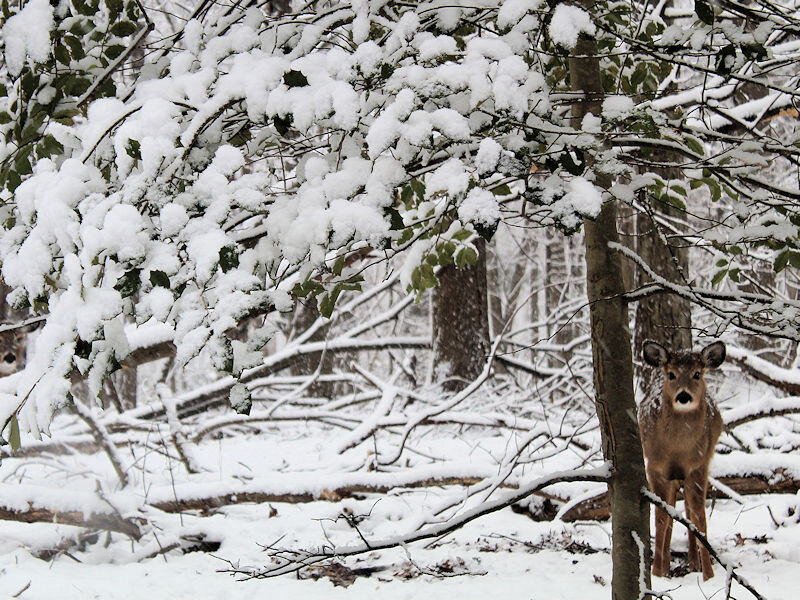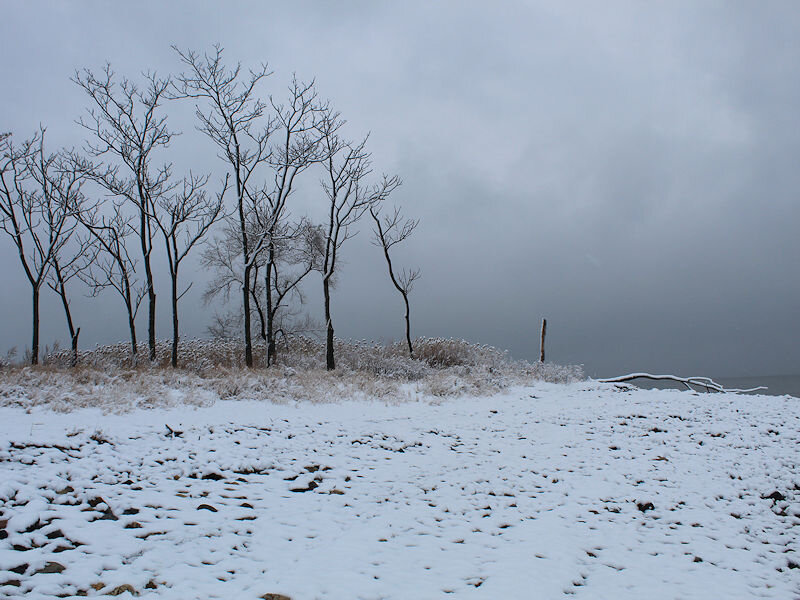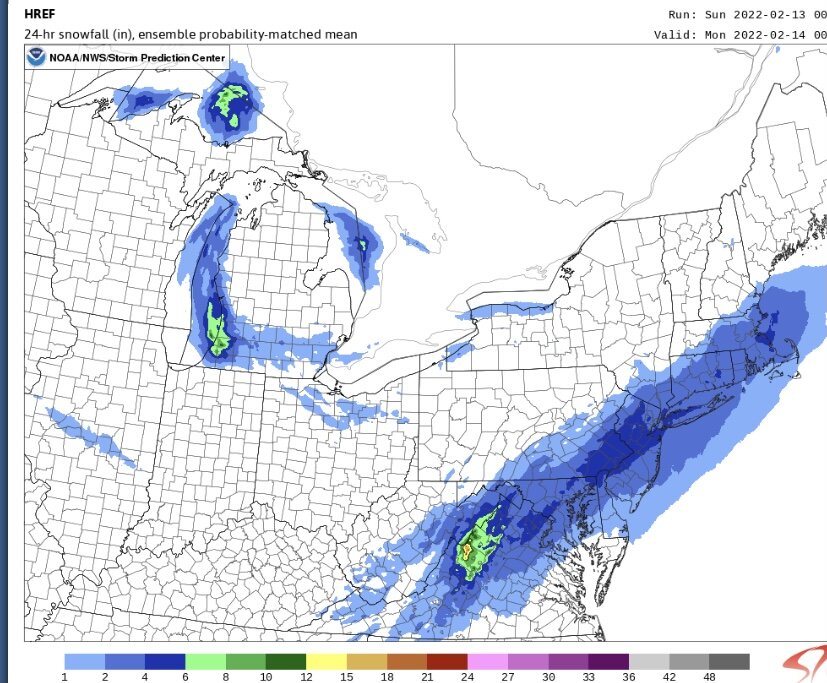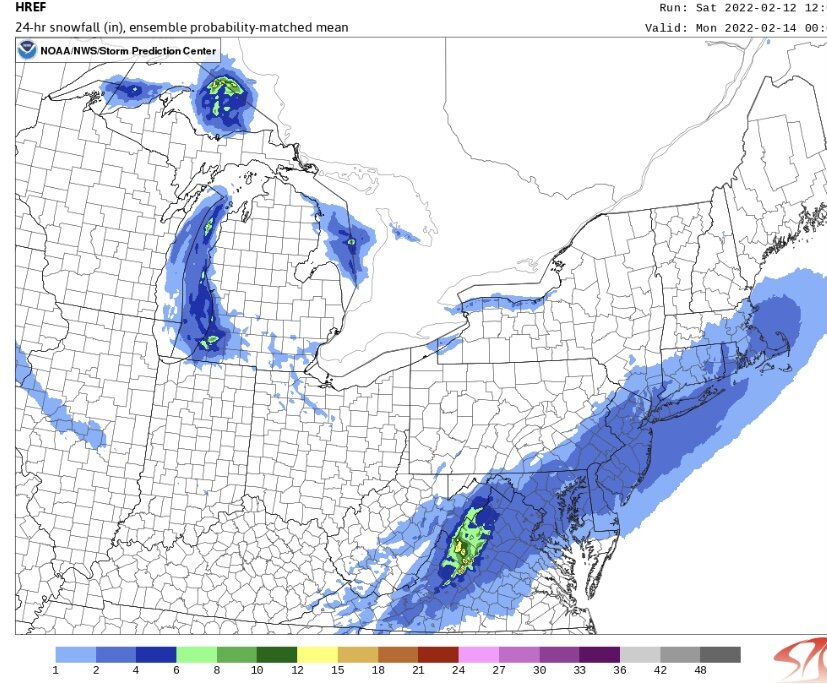-
Posts
22,876 -
Joined
Content Type
Profiles
Blogs
Forums
American Weather
Media Demo
Store
Gallery
Everything posted by donsutherland1
-
On the heels of near record and record warmth, a storm brought a light to moderate snowfall to the northern Middle Atlantic and southern New England regions today. Accumulations included: Allentown: 5.1" Boston: 3.1" Bridgeport: 2.8" Hartford: 1.9" Islip: 2.0" New York City-Central Park: 1.6" New York City-JFK: 2.2" New York City-LGA: 2.3" Newark: 1.9" Philadelphia: 0.4" Providence: 2.8" In the wake of the snowfall, tomorrow and Tuesday will be fair but unseasonably cold. Afterward, milder air will pour into the region setting the stage for a warmer than normal second half of February. The potential exists for several days to see much above normal temperatures. Thursday and Friday are two such potential days. That warmer pattern will likely prevail into the opening week of March. Out west, Los Angeles recorded its 5th consecutive 80° day. That broke the February record of 4 consecutive days, which was set during February 22-25, 1954 and tied during February 11-15, 2015 and February 7-10, 2016. The ENSO Region 1+2 anomaly was -1.0°C and the Region 3.4 anomaly was -0.6°C for the week centered around February 2. For the past six weeks, the ENSO Region 1+2 anomaly has averaged -0.80°C and the ENSO Region 3.4 anomaly has averaged -0.83°C. La Niña conditions will likely persist through meteorological winter. The SOI was -0.19 today. The preliminary Arctic Oscillation (AO) was +1.609. On February 11 the MJO was in Phase 2 at an amplitude of 1.208 (RMM). The February 10-adjusted amplitude was 1.159 (RMM). Based on sensitivity analysis applied to the latest guidance, there is an implied 78% probability that New York City will have a warmer than normal February (1991-2020 normal). February will likely finish with a mean temperature near 37.9° (2.0° above normal).
-

2/13 Light/Moderate Snowfall Nowcasting & Observations
donsutherland1 replied to Northof78's topic in New York City Metro
JFK’s normal snowfall through 2/13 is 16.7”. -

2/13 Light/Moderate Snowfall Nowcasting & Observations
donsutherland1 replied to Northof78's topic in New York City Metro
JFK is up to 20.3” for winter 2021-22. JFK’s normal seasonal snowfall is 25.9” (1991-2020 baseline). -

2/13 Light/Moderate Snowfall Nowcasting & Observations
donsutherland1 replied to Northof78's topic in New York City Metro
Snowfall totals so far: Islip: 2.0" New York City-JFK: 2.2" New York City-LGA: 2.3" New York City-NYC: 1.6" Newark: 1.9" -

2/13 Light/Moderate Snowfall Nowcasting & Observations
donsutherland1 replied to Northof78's topic in New York City Metro
Short video from this morning. -

2/13 Light/Moderate Snowfall Nowcasting & Observations
donsutherland1 replied to Northof78's topic in New York City Metro
- 622 replies
-
- 11
-

-
Morning thoughts… It will be mostly cloudy with light to perhaps moderate snow. A general 1”-3” with some locally higher amounts is likely. High temperatures will likely reach the lower and middle 30s in most of the region. Likely high temperatures around the region include: New York City (Central Park): 34° Newark: 35° Philadelphia: 37° Tomorrow and Tuesday will be cold days. Warmer weather will develop afterward. Normals: New York City: 30-Year: 41.8°; 15-Year: 41.8° Newark: 30-Year: 42.5°; 15-Year: 42.6° Philadelphia: 30-Year: 43.8°; 15-Year: 43.6°
-

2/13 Light/Moderate Snowfall Nowcasting & Observations
donsutherland1 replied to Northof78's topic in New York City Metro
-
Yes. 2018 saw the historic warmth on 2/21. There was also an early April snowstorm.
-
61 at JFK.
-
Ahead of a coming light snow event, temperatures soared to near record and record highs in parts of the region. Daily records included: Atlantic City: 64° (tied record set in 2018) Boston: 60° (old record: 58°, 1984 and 1999) Bridgeport: 60° (old record: 54°, 2009 and 2018) Hartford: 59° (old record: 54°, 1984 and 1999) Islip: 62° (old record: 55°, 1984) New Haven: 58° (old record: 55°, 2018) New York City-JFK: 61° (old record: 58°, 1966 and 2018) Portland, ME: 54° (old record: 51°, 1984) Providence: 63° (old record: 61°, 1999) Out west, Los Angeles recorded its 4th consecutive 80° day. That ties the February record, which was set during February 22-25, 1954 and tied during February 11-15, 2015 and February 7-10, 2016. In the wake of the passage of a strong cold front, tomorrow will be mostly cloudy and sharply colder. A period of light snow is likely in parts of the region tomorrow into tomorrow night. A general 1"-3" of snow is likely across the region with some locally higher amounts. The second half of February will see a significant pattern change. Ridging will develop in the East. That pattern change will produce sustained above normal to occasionally much above normal readings after mid-month. That warmer pattern will likely prevail into the opening week of March. The ENSO Region 1+2 anomaly was -1.0°C and the Region 3.4 anomaly was -0.6°C for the week centered around February 2. For the past six weeks, the ENSO Region 1+2 anomaly has averaged -0.80°C and the ENSO Region 3.4 anomaly has averaged -0.83°C. La Niña conditions will likely persist through meteorological winter. The SOI was +4.95 today. The preliminary Arctic Oscillation (AO) was +1.381. On February 10 the MJO was in Phase 2 at an amplitude of 1.157 (RMM). The February 9-adjusted amplitude was 1.126 (RMM). Based on sensitivity analysis applied to the latest guidance, there is an implied 75% probability that New York City will have a warmer than normal February (1991-2020 normal). February will likely finish with a mean temperature near 37.9° (2.0° above normal).
-
No. New Haven did not reach 60.
-
Ahead of tomorrow’s light snow event, daily record high temperatures have already been set at Bridgeport, Islip, New Haven, and New York City-JFK.
-

2/13 Light/Moderate Snowfall Nowcasting & Observations
donsutherland1 replied to Northof78's topic in New York City Metro
-
Morning thoughts… It will be partly sunny and very mild. High temperatures will likely reach the upper 50s and lower 60s in most of the region. Likely high temperatures around the region include: New York City (Central Park): 57° Newark: 58° Philadelphia: 60° Tomorrow will be mostly cloudy with periods of light snow. A general 1”-2” is likely with some locally higher amounts across central New Jersey and portions of Long Island. It will be much colder. Normals: New York City: 30-Year: 41.6°; 15-Year: 41.6° Newark: 30-Year: 42.3°; 15-Year: 42.4° Philadelphia: 30-Year: 43.6°; 15-Year: 43.4°
-

2/13 Light/Moderate Snowfall Nowcasting & Observations
donsutherland1 replied to Northof78's topic in New York City Metro
ACY had 10.0” during 1975-76. -

2/13 Light/Moderate Snowfall Nowcasting & Observations
donsutherland1 replied to Northof78's topic in New York City Metro
NYC's snowfall when ISP reported 30" or more: 1963-1964 44.7 1964-1965 24.4 1966-1967 51.5 1968-1969 30.2 1973-1974 23.5 1975-1976 17.3 1977-1978 50.7 1981-1982 24.6 1982-1983 27.2 1993-1994 53.4 1995-1996 75.6 2000-2001 35.0 2004-2005 41.0 2005-2006 40.0 2008-2009 27.6 2009-2010 51.4 2010-2011 61.9 2012-2013 26.1 2013-2014 57.4 2014-2015 50.3 2015-2016 32.8 2016-2017 30.2 2017-2018 40.9 2020-2021 38.6 -

2/13 Light/Moderate Snowfall Nowcasting & Observations
donsutherland1 replied to Northof78's topic in New York City Metro
1957-1958 44.7 1960-1961 54.7 1963-1964 44.7 1966-1967 51.5 1978-1979 29.4 1986-1987 23.1 1995-1996 75.6 2002-2003 49.3 2010-2011 61.9 2013-2014 57.4 2017-2018 40.9 -
Temperatures soared into the upper 50s and even lower 60s across the region today. The early spring fling will continue tomorrow, as temperatures again rise well into the 50s and perhaps lower 60s. The unseasonable warmth will be interrupted on Sunday. A strong cold front will result in sharply colder conditions for Sunday. This cold shot will be short-lived. However, while the cold air is in place, an offshore storm could bring a light snow to parts of the region on Sunday into Monday. There is consensus on the long range ensembles that the second half of February will likely experience a significant pattern change. Ridging will develop in the East. That pattern change would lead to a return of sustained above normal to occasionally much above normal readings after mid-month. The warmer pattern will likely prevail into the opening week of March. The ENSO Region 1+2 anomaly was -1.0°C and the Region 3.4 anomaly was -0.6°C for the week centered around February 2. For the past six weeks, the ENSO Region 1+2 anomaly has averaged -0.80°C and the ENSO Region 3.4 anomaly has averaged -0.83°C. La Niña conditions will likely persist through meteorological winter. The SOI was +6.58 today. The preliminary Arctic Oscillation (AO) was +1.307. On February 9 the MJO was in Phase 2 at an amplitude of 1.122 (RMM). The February 8-adjusted amplitude was 1.063 (RMM). Based on sensitivity analysis applied to the latest guidance, there is an implied 73% probability that New York City will have a warmer than normal February (1991-2020 normal). February will likely finish with a mean temperature near 37.8° (1.9° above normal).
-
Temperatures have again surged into the mild 50s as of noon in much of the northern Middle Atlantic and southern New England regions. Most locations will have a top 10 high temperature for February 11th. In an essay, “The Birds of Spring,” Geoffrey Crayon wrote of the arrival of spring warmth, “the long death-like sleep of winter was at an end.” At the same time, he noted before winter’s demise, that there had been a “sharp return of winter…” While the Sunday offers perhaps the last chance of snow for parts of the region—light snow—for some time, historic data argues that some snow in March cannot be ruled out. Patterns change. For fun, I took the 10 highest temperatures for February 11th for Boston, Bridgeport, Islip, New York City (JFK, LGA, and NYC), Newark, and Philadelphia. There were 12 years during which 3 or more of those locations simultaneously reported top 10 maximum temperatures for the data. Select Outcomes for March: New York City: Measurable snow: 75% of cases; 1” or more: 67% of cases; 4” or more: 58% of cases; 6” or more: 50% of cases; 10” or more: 25% of cases; Mean: 6.2”; Normal: 5.0”; Most Recent: 11.6”, 2018 Philadelphia: Measurable snow: 67% of cases; 1” or more: 67% of cases; 4” or more: 58% of cases; 6” or more: 58% of cases; 10” or more: 25% of cases; Mean: 6.0”; Normal: 3.6”; Most Recent: 15.2”, 2018 In sum, it’s premature to write off the possibility of measurable snow in March. Such snow is not assured, but some of the long-range guidance shows the redevelopment of an Alaskan Ridge pattern during the first week in March. Should such a pattern develop, it could open a window of opportunity for some additional snow.
-
Morning thoughts… It will be mostly sunny and very mild. High temperatures will likely reach the middle 50s in most of the region. Southern New Jersey and southeastern Pennsylvania could see the mercury approach or reach 60°. Likely high temperatures around the region include: New York City (Central Park): 55° Newark: 55° Philadelphia: 60° Temperatures will remain above normal into the weekend before colder air returns on Sunday. A light snowfall is possible in parts of the region on Sunday. Normals: New York City: 30-Year: 41.4°; 15-Year: 41.4° Newark: 30-Year: 42.1°; 15-Year: 42.2° Philadelphia: 30-Year: 43.4°; 15-Year: 43.2°
-
If the EPS Iis right, it will turn cooler. It still doesn’t look exceptionally cold, but there’s a lot of time for changes.
-
I think we’ll fall short of a 40-degree mean temperature.
-
After the 1st week in March.
-
My reference deals with sustained ridging returning to the East. Warmth has developed sooner. February 1-10 was about 1.5 degrees above normal.



